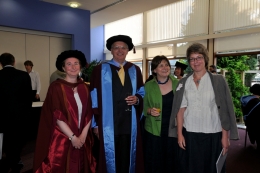Dr Chris Warren
PROFESSIONAL PATHWAYS FOR THE ENGLISH PROVINCIAL ARTIST IN THE EARLY NINETEENTH CENTURY
Most art research into the first half of the nineteenth century focuses on the paintings by the famous, but it was the large majority of lesser artists that produced the most of the images and who explored the growing number of pathways between production and sales. This research concentrates on the processes of production that were used by these ‘common artists’ and, by beginning in the provinces, gains a balanced view of the dynamics of the profession.
The research is empirically based and uses the practical experiences of artists to investigate how they made a living and how they interacted with each other for their common benefit. A new methodology, termed cohort prosopography, has been developed which uses the careers of a group of near contemporaries as a tool with which to probe the mechanics of the art market. The artists selected for the cohort were all from Plymouth. They were Samuel Prout (1783-1852), Benjamin Robert Haydon (1786- 1846), Philip Hutchings Rogers (1786-1853), Nicholas Condy (1793-1857) and Charles Lock Eastlake (1793-1865). An important element in the research has been the analysis of the Artists Annuity and Benevolent Fund, which acted as a safety net for many members of the profession when they were unable to work. The availability of occupational census reports from 1831 onwards has also allowed the technique of mass prosopography to be used to discover patterns of artistic professional activity throughout England and to compare these with the activities of of the cohort.
This thesis finds that patronage still played a significant role in many artists’ lives with the major publishers arriving as extra patrons. Exhibitions became more oriented towards sales and new ones were organised by practicing artists for their own benefit. Artists also organised and managed their own welfare and in so doing attracted the financial support of society at large. The attraction of the metropolis was strong and most provincial artists ended up working there. The research has found that the public supported the middle class aspirations of the artists and many wanted to see them evolve into a fully regulated profession. The Royal Academy successfully resisted this, and the opportunity was lost.
Most of this work, including the methodology, is highly original and it is hoped that it will encourage others to study how artists worked in order to gain a more rounded view of the way the profession reached maturity.

